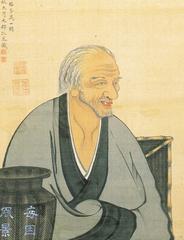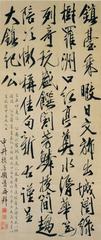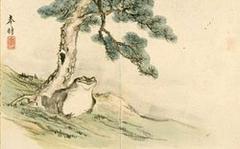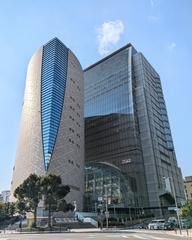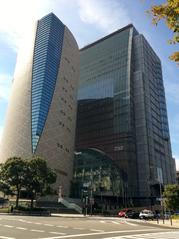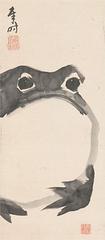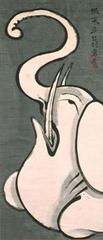
Osaka Museum of History: Visiting Hours, Tickets, and Travel Guide
Date: 15/06/2025
Introduction: Why Visit the Osaka Museum of History?
Located in the heart of Osaka, the Osaka Museum of History offers a vivid, interactive journey through more than 1,350 years of the city’s dynamic past. The museum stands adjacent to Osaka Castle and the NHK Osaka Broadcasting Center, on ground once occupied by the ancient Naniwa-no-miya Palace—Japan’s first imperial palace. This site is both a modern cultural institution and a living archaeological site, allowing visitors to connect with Osaka’s origins and trace its evolution from ancient times to a bustling modern metropolis.
The museum’s innovative vertical layout, immersive exhibits, and diverse programming make it a must-visit destination for travelers, families, and history enthusiasts alike. With panoramic views, life-sized reconstructions, and a wealth of authentic artifacts, the Osaka Museum of History bridges the past and present, providing a comprehensive and accessible experience for all. (City of Osaka; Nippon.com; Osaka Museum of History Official)
Table of Contents
- Osaka’s Origins and the Naniwa-no-miya Palace
- Chronicles of Osaka: From Ancient Port to Economic Hub
- The Edo Period and the Rise of the “Nation’s Kitchen”
- Modernization, War, and Recovery
- Notable Artifacts and Museum Highlights
- Museum Layout: A Vertical Journey Through Time
- Visitor Information: Hours, Tickets, and Accessibility
- Facilities, Amenities, and Travel Tips
- Nearby Attractions and How to Get There
- FAQs
- Summary and Recommendations
- Sources and Further Information
1. Osaka’s Origins and the Naniwa-no-miya Palace
The museum’s foundations are intertwined with ancient Naniwa, where archaeological discoveries revealed the remains of Japan’s first full-fledged imperial palace. The Naniwa-no-miya Palace, established in the 7th century following the “Taika-no-kaishin” reforms, was pivotal in the centralization of imperial power and a hub for diplomacy and trade. Its strategic location at the confluence of rivers and proximity to the sea underscored Osaka’s early prominence. Today, visitors can view preserved palace remains integrated into the museum’s structure, offering a tangible connection to Japan’s earliest capitals. (City of Osaka; Nippon.com)
2. Chronicles of Osaka: From Ancient Port to Economic Hub
Osaka’s trajectory from an ancient port to a global economic powerhouse is chronicled through immersive exhibits. Notably, Prince Shotoku’s founding of Shitennoji Temple in 593 solidified the city’s role as a center for Buddhism and international exchange. Over centuries, Osaka’s fertile plains and waterways made it a nexus for trade and pilgrimage, setting the stage for its later economic and cultural dominance. The rise of Osaka Castle under Oda Nobunaga and Toyotomi Hideyoshi further cemented its strategic and economic importance. (City of Osaka)
3. The Edo Period and the Rise of the “Nation’s Kitchen”
During the Edo period, Osaka flourished as the commercial heart of Japan, earning the nickname “Nation’s Kitchen.” The Dojima Rice Market set national rice prices, and the city’s merchant culture drove advancements in arts, education, and science. The museum’s ninth floor recreates this vibrant era through detailed models and dioramas, immersing visitors in bustling markets, waterways, and merchant quarters. (Japan Cultural Expo)
4. Modernization, War, and Recovery
The Meiji Restoration ushered in rapid industrialization and urban growth, positioning Osaka as a leader in Japan’s modernization. Despite devastation during World War II, the city’s postwar recovery was remarkable, epitomized by the 1970 Osaka Expo. Exhibits on the “Great Osaka” (7th floor) highlight key sites, postwar reconstruction, and the city’s role in shaping contemporary Japan. (Nippon.com)
5. Notable Artifacts and Museum Highlights
The museum’s collection spans centuries, with treasures such as Toyotomi Hideyoshi’s letter from the Chinese court, imperial documents, and relics from various historical periods. Interactive displays, hands-on archaeology corners, and multimedia presentations ensure an engaging visit for all ages. (Japan Cultural Expo)
6. Museum Layout: A Vertical Journey Through Time
The Osaka Museum of History guides visitors from the 10th floor down in chronological order, each floor representing a key era:
- 10th Floor: Ancient Osaka and Naniwa-no-miya Palace—life-size reconstructions, immersive court ceremonies, and a panoramic Observation Hall with views of Osaka Castle.
- 9th Floor: Medieval and Early Modern Osaka—market scenes, merchant quarters, and interactive trade exhibits.
- 8th Floor: Staff and service area; not open to the public.
- 7th Floor: Modern and Contemporary Osaka—industrialization, postwar recovery, and pop culture.
- 6th Floor: Special Exhibition Hall—rotating themed exhibitions, such as sword collections and local clan histories.
Each exhibition floor is divided into an “Overview Zone” (immersive environments and large-scale models) and a “Detailed Viewing Zone” (artifacts, documents, and digital guides), offering both sensory immersion and scholarly depth. (Osaka Museum of History Official)
7. Visitor Information: Hours, Tickets, and Accessibility
Visiting Hours
- Open: 9:30 AM to 5:00 PM (last entry at 4:30 PM)
- Closed: Tuesdays (or following day if Tuesday is a national holiday), December 28–January 4
(Osaka Museum of History Official)
Tickets and Admission
- Adults: ¥600
- High school/university students: ¥400
- Junior high school students and younger: Free
- Audio guide rental: ¥200 (available in English, Chinese, Korean)
- Special exhibitions: Additional fees may apply
- Group discounts: Available for 20+ visitors
Tickets can be purchased at the museum entrance or online. Combined tickets with Osaka Castle are also offered. (TravelSetu; Japan Guide)
Accessibility
- Fully wheelchair accessible with elevators and ramps on all public floors
- Multilingual signage and audio guides
- Barrier-free restrooms and baby-changing facilities
8. Facilities, Amenities, and Travel Tips
- Audio Guides: Highly recommended for non-Japanese speakers (¥200 rental)
- Lockers: Coin lockers available near the entrance
- Café: Light meals and refreshments on the lower floor
- Museum Shop: Books, souvenirs, and Osaka-themed gifts
Tips for Visitors:
- Weekday mornings offer the most relaxed experience
- Photography is permitted (flash/tripods prohibited); check for signage on restricted areas
- The Observation Hall is ideal for panoramic photos of Osaka Castle
- Families can enjoy interactive workshops and a kids’ corner during holidays
9. Nearby Attractions and How to Get There
Location:
4-1-32 Otemae, Chuo-ku, Osaka 540-0008, Japan
By Public Transport:
- Osaka Metro: Tanimachi Yonchome Station (Tanimachi/Chuo Lines, Exit 9), ~3–5 min walk
- JR Line: Morinomiya Station, ~20–30 min walk
Close Attractions:
- Osaka Castle and Park: Directly across the street (Japan Guide)
- Naniwa Palace Site Park: Adjacent to the museum
- NHK Osaka Broadcasting Center: Nearby for cultural events
- Other sites: Dotonbori, Shitennoji Temple, Umeda Sky Building, and more
10. Frequently Asked Questions (FAQs)
Q: What are the museum’s opening hours?
A: 9:30 AM–5:00 PM (last admission 4:30 PM), closed Tuesdays and New Year holidays.
Q: How much do tickets cost?
A: Adults ¥600, students ¥400, younger children free.
Q: Are there guided tours?
A: Audio guides in multiple languages are available. Periodic guided tours are scheduled—check the official website.
Q: Is the museum wheelchair accessible?
A: Yes, with elevators, ramps, and accessible restrooms.
Q: Can I take photos inside?
A: Photography is allowed in most areas (no flash/tripods).
Q: Are food and drinks allowed?
A: Not in exhibition areas; café located on the lower floor.
11. Summary and Recommendations
The Osaka Museum of History is an essential destination for understanding the city’s transformation from ancient Naniwa to modern Osaka. Its vertical, chronological layout, immersive exhibits, and authentic artifacts provide a dynamic and accessible experience for all ages. With affordable tickets, excellent accessibility, and a central location near Osaka Castle, it’s the perfect starting point for exploring Osaka’s rich cultural landscape.
Recommendations:
- Download the Audiala app for audio tours and insider tips
- Check the museum’s website for updates on special exhibitions and events
- Combine your visit with Osaka Castle and nearby sites for a full day of exploration
12. Sources and Further Information
- City of Osaka, Historical Overview, 2025
- Nippon.com, Guide to Osaka Museum of History, 2025
- Osaka Museum of History Official Website, Exhibitions and Visitor Information, 2025
- Japan Cultural Expo, Osaka Museum of History, 2025
- TravelSetu, Osaka Museum of History Tourism Guide, 2025
- Japan Guide, Osaka Museum of History, 2025
- Out of Town Blog, Osaka Museum of History
- Kanpai Japan, Osaka Museum of History
- Japan Insides, Osaka Museum of History
- Nomadasaurus, 3 Days in Osaka Itinerary

